Preliminary reports from regional geologists deployed across the province by the British Columbia Ministry of Energy and Mines indicate that exploration slowed in 2014, continuing a trend that started with smaller and early-stage projects in 2011. Nonetheless, explorationists continued to define or expand porphyry and porphyry-related copper gold and coppermolybdenum deposits, gold deposits of various types, and stratiform base-metal, specialty metals, industrial minerals and coal deposits.
Precious Metals
In April, Banks Island Gold Ltd. started production at the Yellow Giant gold-silver mine. Currently mining underground at the Bob and Tel developments, mill throughput is 200 tonnes per day. In its first five months, the operation sold over 220,000 grams of gold and 575,000 grams of silver.

Pretium Resources Inc. released an updated feasibility study for its Brucejack underground project. The proposed 18-year mine has an estimated 230 million grams contained gold in proven and probable categories. The project is in the review stage of provincial environmental assessment. Deep drilling at the Valley of the Kings continues to intersect high-grade gold over 0.5- to two-metre intervals.
Ascot Resources Ltd. focused exploration on the past-producing Premier gold-silver mine, drilling a structural zone 30 to 150 metres wide.
Dolly Varden Silver Corporation and Hecla Mining Company continued drilling into the fall at the past-producing Dolly Varden silver-gold project. Drilling intersected deep mineralized horizons, proving geological concepts generated by fieldwork earlier in the year. At the nearby Homestake Ridge, drilling by Homestake Resources Corporation extended the strike length of the Slide zone to 800 metres. The Slide zone, discovered during 2013 drilling, is considered analogous to the main Homestake Silver deposit. Main Homestake, Homestake Silver and South Reef zones contain an indicated 20 million grams of silver and 3.8 million grams of gold, and an inferred 633 million ounces of silver and 28.3 million ounces of gold.

Brixton Metals Corporation explored beyond the Oban Breccia silver zone and evaluated the Glenfiddich and Outlaw zones at its Thorn project. Drilling at Outlaw tested a gold-insoil anomaly and returned several multi-gram gold intersections in siltstone and greywacke.
Colorado Resources Ltd. conducted grassroots exploration at its KSP project, generating drill targets based on 1,900 combined soil and rock samples and a 600-line-kilometre airborne magnetic survey. A drilling program was completed in early October.
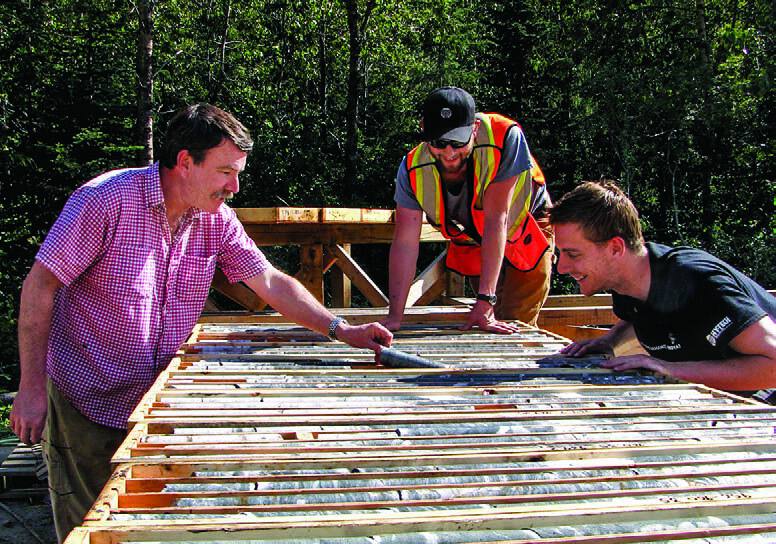
Porphyry (Copper-Gold, Copper-Molybdenum, Molybdenum) Projects
Seabridge Gold Inc. is poised to make its KSM project a reality, having received a provincial environmental assessment certificate and other permits. The company can now start preconstruction activities, including building the rights-of-way for the 23-kilometre Mitchell Treaty tunnel. Deep drilling at the Iron Cap and Kerr deposits yielded copper-gold values that suggest resources beyond the 2.68 billion tonnes of proven and probable reserves grading 0.51 grams per tonne gold and 0.22 per cent copper.
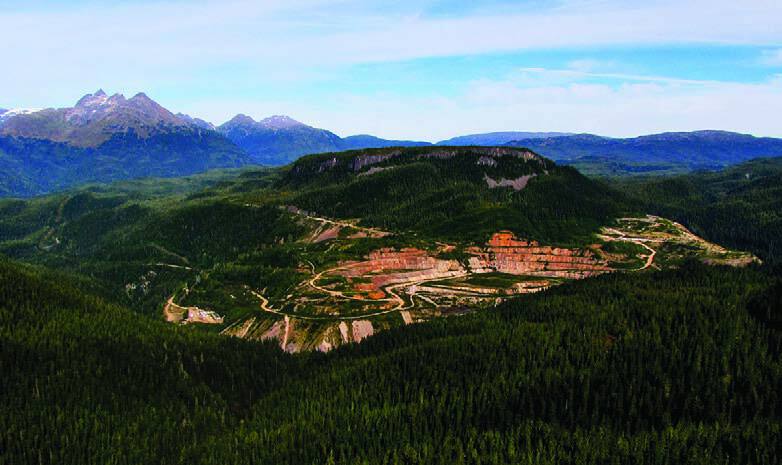
Avanti Mining Inc. is poised to begin construction at the past producing Kitsault molybdenum mine. The federal environmental assessment process, completed in June, concluded that the project would not result in unacceptable environmental damage.
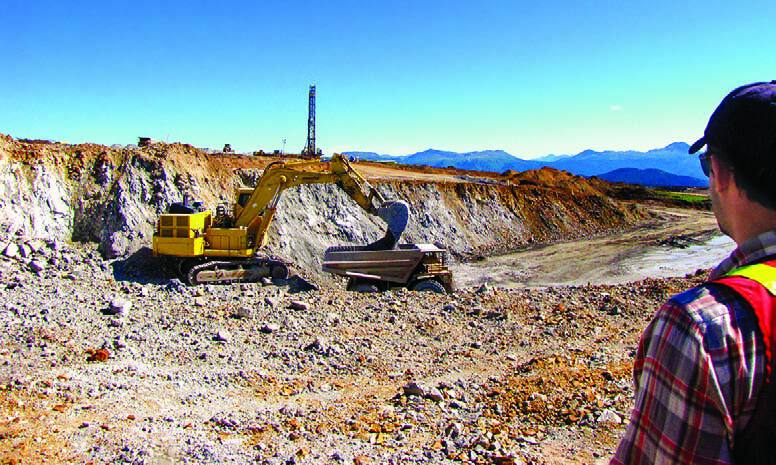
At the Red Chris project (Imperial Metals Corporation), the 30,000-tonne-per-day mine site saw installation of all major infrastructure components, construction of a tailings dam, and mining at the East zone. Commissioning is scheduled for late this year, although protests related to the Mount Polley tailings dam failure and resulting spill may delay startup. Exploration for porphyry copper gold deposits similar to Red Chris continued nearby. Colorado Resources reported an initial inferred resource of 142.3 megatonnes grading 0.22 per cent copper and 0.26 grams per tonne gold from work completed in 2013 at the North ROK project; early-2014 drilling proved depth continuity. At the ROK-Coyote project, Firesteel Resources Inc. and Oz Minerals Limited drilled several targets under a joint-venture agreement. However, drilling was interrupted by protestors with environmental and social concerns.
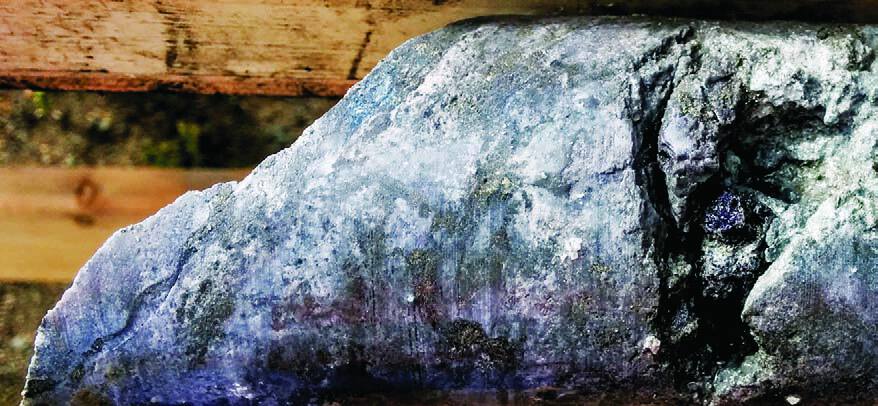
Gold Reach Resources Ltd. continues to intersect copper-gold at its multideposit Ootsa project, six kilometres from the Huckleberry copper mine. Drilling in 2014 demonstrated that mineralization extends between the East and West Seel deposits. Exploration of regional prospects in the 57- by 21-kilometre mineral tenure included groundwork and drilling.
Kaizen Discovery Inc. (formerly West Cirque Resources) and joint-venture partner Freeport McMoRan Inc. proved metalliferous roots at Tanzilla. Drilling intersected several intrusive phases and high-sulfidation, copper-gold-molybdenum mineralization in three of five holes.
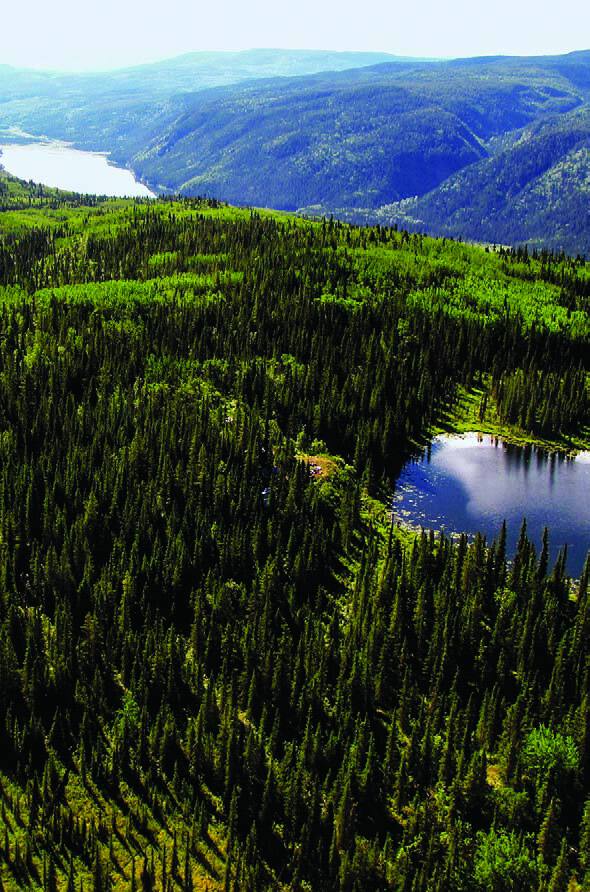
Prosper Gold Corp. and Firesteel Resources Inc. completed over 6,000 metres of drilling at their Sheslay project. Nearby, Doubleview Capital Corp. identified a copper-gold porphyry system at the Hat prospect, and completed drilling and geophysical surveys. Carmax Mining Corp. also completed drilling and geophysical programs at the Eaglehead copper-molybdenum project.
Soil and rock chip sampling by Orevista Exploration Consultants Ltd. identified gold-copper mineralization at a new prospect, the Pyramid.
Omineca and Northeast
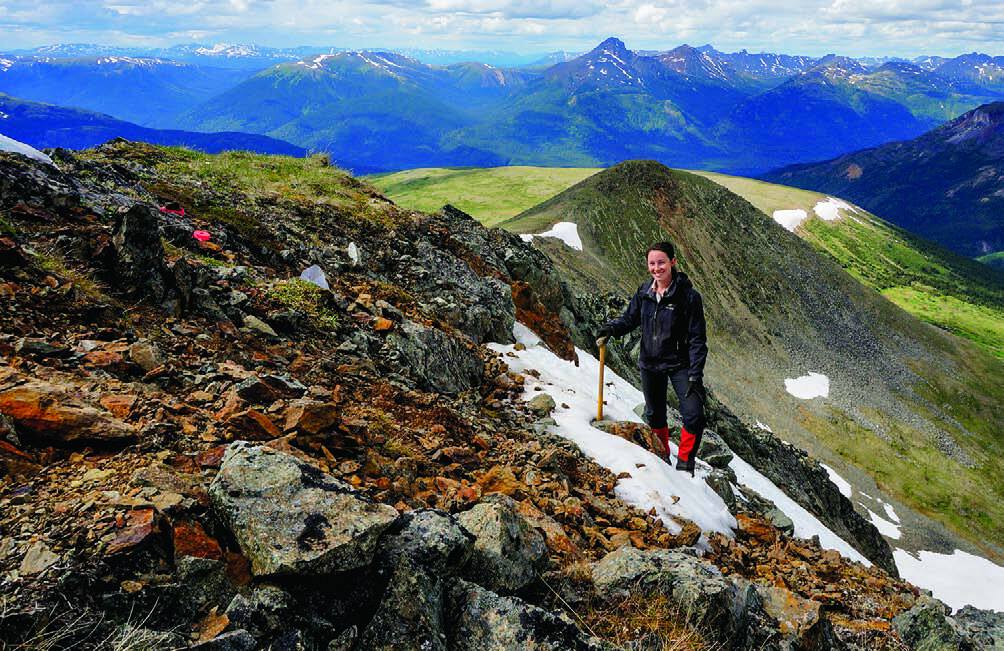
Precious Metals
New Gold Inc. released its Blackwater feasibility study in January. The report describes an open-pit mining operation with a 60,000-tonne per-day processing plant and a mine life of 17 years. Engineering studies were completed as the project moved toward the mine application stage.
Work resumed on New Gold’s Blackwater Regional program. In August, two drills were turning at Key, and ground geophysics was completed. At Van Tine, most of the ground geophysics and two drill holes were completed before the property was overrun by fire. Following a ban on fieldwork, drilling continued only at Key. A technical report with an updated resource estimate was released for Capoose.

Kootenay Silver Inc. announced the discovery of two high-level epithermal systems, Fox and Two Times Fred, resulting from grassroots work. Venerable Ventures Ltd. examined new targets at Trout.
Drilling and test pitting at Green Gold was completed by private company 0902744 B.C. LTD along the Pinchi fault zone.
Independence Gold Corp. released a technical report and updated resource estimate for 3Ts. Drilling tested for additional mineralized veins.
Porphyry (Copper-Gold, Copper-Molybdenum, Molybdenum) Projects
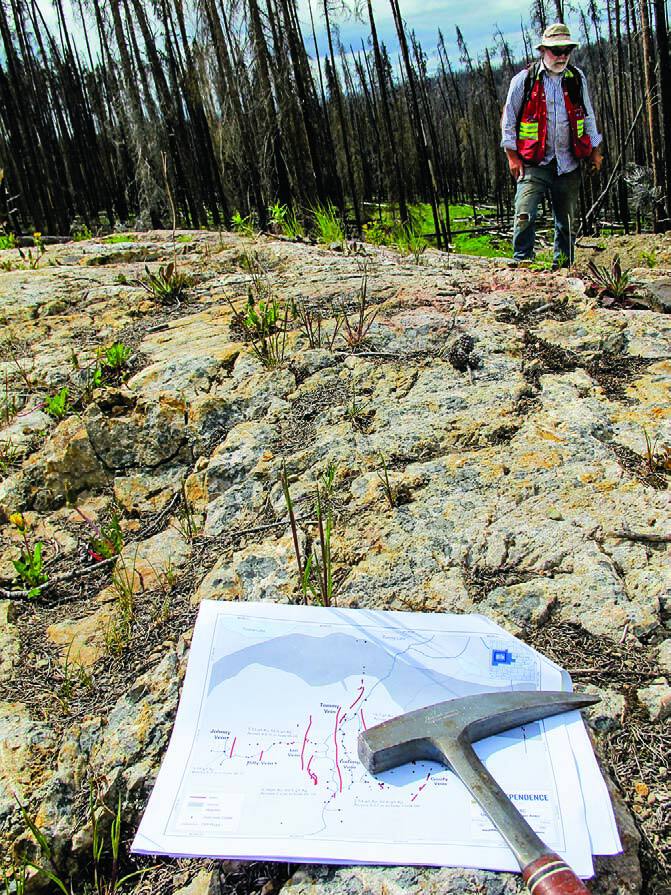
Thompson Creek Metals Company Inc. completed the first year of operations at the Mt. Milligan mine, with ramp-up activities continuing throughout the year. Milling operations are expected to be near 80 per cent of design capacity by the end of 2014. Ongoing construction included a permanent operations residence. A ground induced-polarization survey was completed on a claim block northeast of the mine. Mining of stockpiled and fresh ore continued at Endako, and a ramp was constructed from the causeway area between the Endako and Denak East pits to the in-pit crusher.

AuRico Gold Inc. began an environmental assessment of the proposed Kemess Underground (KUG) block cave operation. Drilling resumed east of existing reserves at Kemess East, targeting a zone similar in style and size to KUG.
Grassroots to early-stage exploration was conducted at Rottaker and UDS (Serengeti Resources Inc.), Redton (Kiska Metals Corporation), Col-Later (Pacific Empire Minerals Corp.), Chuchi (Chlormet Technologies Inc.), TaklaRainbow (Manado Gold Corp.), Cat Mountain (Rift Valley Resources Corp.) and Thor (Copper North Mining Corp.).
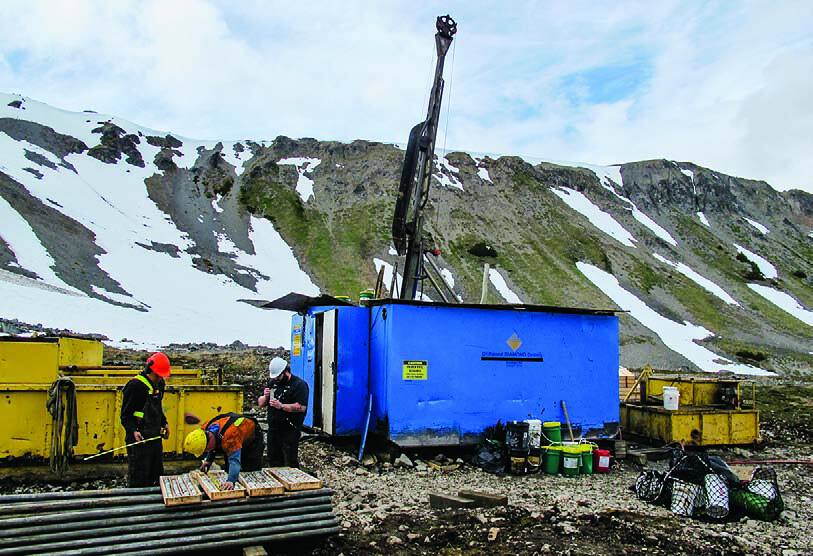
Polymetallic Base and Precious Metals
Teck Resources Limited resumed exploration at Cirque with drilling and an airborne VTEM geophysical survey. Grassroots work was conducted at Pie, Cirque East and Yuen. An airborne gravity survey was flown over the Teck properties and Canada Zinc Metals’ Akie and Mt. Alcock.

Canada Zinc Metals Corp. completed step-out and infill drilling at Akie, which focused on the Cardiac Creek deposit, and soil sampling at Yuen North.
Specialty Metals, Iron, Nickel, Industrial Minerals
Taseko Mines Limited continued metallurgical test work at Aley. Modification of the process resulted in niobium recoveries above the targeted 50 per cent. The resource was upgraded to include a reserve estimate of 83.8 megatonnes at 0.5 per cent Nb2O5. Taseko proposes an open-pit mine with a 10,000-tonne-per-day processing plant and a ferroniobium convertor. Engineering and environmental studies continued.
First Point Minerals Corp. reported bench-scale market tests indicating that the Decar concentrate is amenable to blending with laterite nickel in ferronickel production.
Graymont Western Canada Inc. continued work on the proposed Giscome limestone quarry and lime processing facility. Drilling was completed in early 2014 to better define the resource.

Green Mountain Gemstones Inc. continued to explore for, and mine, nephrite jade at Ogden Mountain.
After being delayed by fire, Fertoz Limited collected a bulk phosphate sample at Wapiti East for trials on organically fertilized farms. A Mines Act application is progressing for a small mine.
Coal
Anglo American plc (Peace River Coal Inc.) received the final component of the Mines Act Permit Amendment for the Roman Mountain expansion, continued mine construction and conducted infill drilling. An exploration team will remain on site as the Trend-Roman mine goes into care and maintenance in 2015. Drilling at Waterfall was completed in April.
Walter Energy, Inc. continued preparatory work, drilling and test pitting at the EB and Hermann expansions near the Perry Creek mine. By mid-year, the company placed the Perry Creek mine and the Brule mine (and its preparation plant at Willow Creek) on care and maintenance.
Teck Coal Limited continued engineering work and extracted a test sample at Quintette (Babcock). Although Teck received final permit requirements mid-year, it placed the site on care and maintenance.
HD Mining International Ltd. continued constructing a decline at Murray River to extract a bulk coal sample. As of September, the decline was about 660 metres long.
Glencore plc completed geotechnical and exploration drilling in the Central zone at Sukunka and collected a bulk coal sample. The project is advancing through permitting.
Jameson Resources Limited completed an initial drilling program and limited trenching at Dunlevy.
Canadian Dehua International Mines Group Inc. completed a feasibility study for the No. 1 mine at Wapiti River and continued working on permitting for railway and power lines.

Thompson-Okanagan-Cariboo
Precious Metals
In 2014, Barkerville Gold Mines Ltd. started mining at Bonanza Ledge, trucking ore to its QR mill. Spanish Mountain Gold Ltd. drilled reverse-circulation holes in the Main zone of its Spanish Mountain sediment-hosted gold deposit to refine resource estimates. Baseline environmental studies continue as the company prepares for formal environmental review.
In December 2013, Ximen Mining Corp. acquired Brett, an epithermal gold property that has seen intermittent exploration since its discovery in 1985. Following compilation and review of historical data, new mapping and geophysical surveys identified targets, which were drilled in the fall.
Westhaven Ventures Inc. drilled the Tower zone on its Shovelnose gold silver property. Six holes encountered anomalous gold and extended the area of known mineralization. At the Elk project, Gold Mountain Mining Corporation continued work on an open-pit bulk sample.
Porphyry (Copper-Gold, Copper-Molybdenum, Molybdenum) Projects
The tailings dam breach and resultant spill at Mount Polley led Imperial Metals Corporation to place the mine on care and maintenance. Copper Mountain Mining Corporation installed a new crusher at the Copper Mountain mine, and Teck Resources Limited commissioned a new mill at Highland Valley. Most projects in the pre-application stage of environmental review made progress. Taseko Mines Limited’s New Prosperity copper-gold project was rejected a second time by a federal review panel.
Fjordland Exploration Inc. and Sumac Mines Ltd. expanded their drill program on the Dillard porphyry coppergold project. Sunrise Resources Ltd. announced plans to drill the Man-Prime property. Copper Mountain Mining Corporation optioned the Axe property from Westar Resources Corporation.
Teck Resources Limited continued to explore targets near its Highland Valley copper-molybdenum mine, with a focus on the Valley and Bethlehem pits.
KGHM International continued engineering and baseline studies to advance the Ajax porphyry copper gold project. The company expects to enter federal and provincial environmental review processes in the second quarter of 2015.
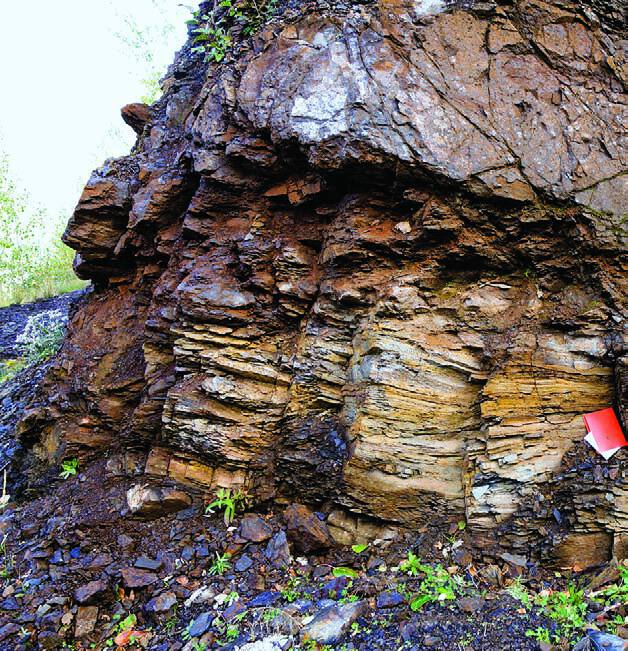
In March, Constantia Resources Ltd. completed the first phase of drilling at the Maggie porphyry copper-molybdenum prospect.
Asher Resources Corp. drilled the Lavington prospect, targeting shear zone hosted gold in altered volcanic rocks.
In October, NMC Resource Corporation completed drilling at Boss Mountain, a past-producing molybdenum mine.
Amarc Resources Ltd. drilled the Ike property, looking for porphyry copper-molybdenum silver mineralization in extensively altered plutonic rocks.
Happy Creek Minerals Ltd. completed a season of surface exploration at its Fox tungsten-skarn property. Prospecting and sampling expanded known zones and discovered new areas of favourable host rock.
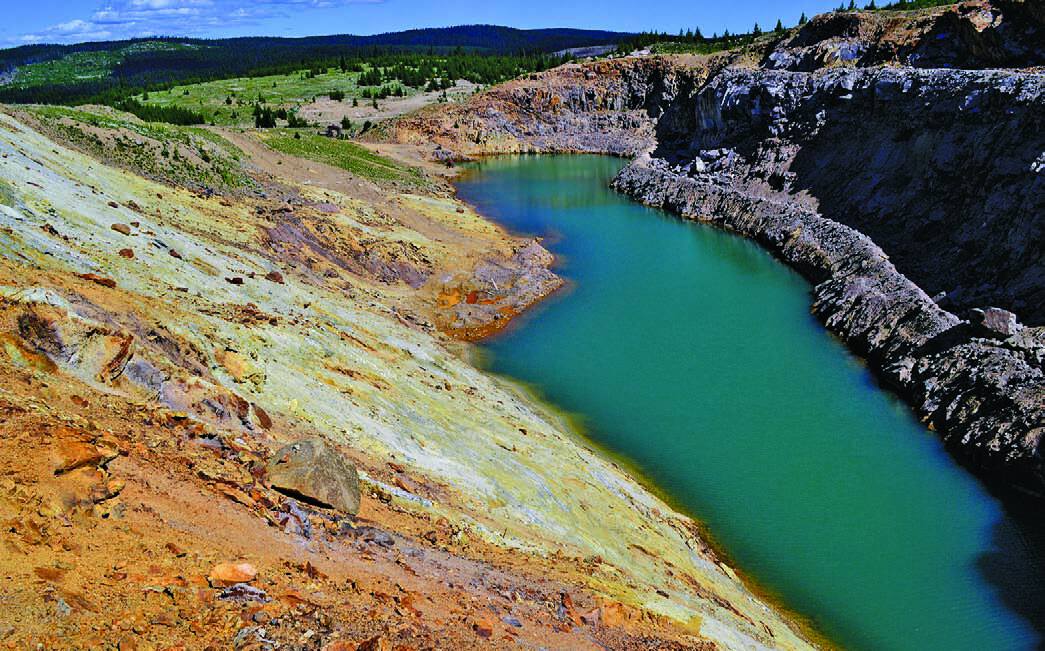
Thompson-Okanagan
Stratiform Base Metal Deposits
In August, Yellowhead Mining Inc. released an updated feasibility study for the Harper Creek copper deposit. Proven and probable mineral reserves now stand at 716 million tonnes grading 0.26 per cent copper, 0.029 grams per tonne gold, and 1.2 grams per ton silver. Initial capital costs would exceed $1 billion. The company anticipates starting formal environmental review late in 2014.
At the Ruddock Creek massive sulphide prospect, Imperial Metals Corporation focused on metallurgical testing of a new sample from the Upper E zone, and collected environmental baseline data for future permitting.
Kootenay-Boundary-Cariboo
Precious Metals
At Jumping Josephine, Orex Minerals Inc. conducted drilling and trenching to extend the mineral resource at JJ Main, and to test targets at the Hillside, JJ West and Bonanza Creek zones. Magnum Goldcorp Inc. completed a ground induced-polarization and magnetometer survey, and drilled on the LH property. Ximen Mining Corp. ran a trenching program on vein systems at Gold Drop.
Porphyry (Copper-Gold, Copper-Molybdenum, Molybdenum) Projects
Riverside Resources Inc. drilled soil geochemical and geophysical anomalies at the Swift Katie property, targeting alkalic porphyry copper-gold. Rocks on the property also display late-stage shear zone hosted gold-silver-copper mineralization.
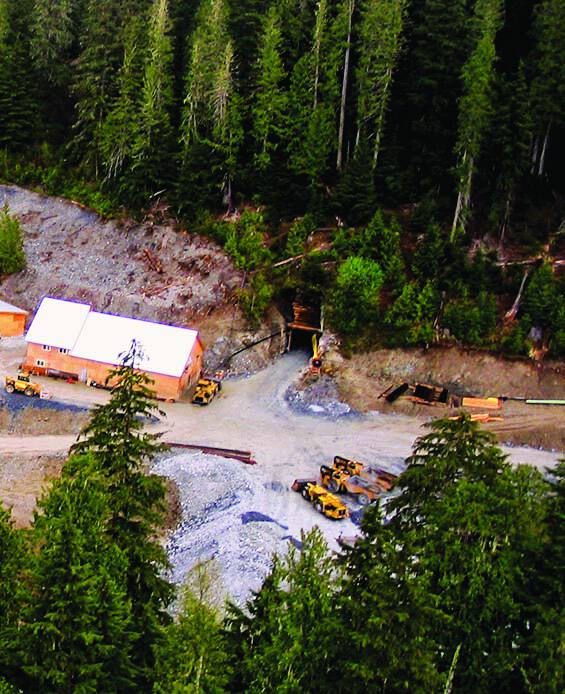
Prospectors Robert Thompson, Renee Hetherington, and Colin Dunn used biogeochemical and geophysical methods to find new massive sulphide showings in densely forested areas on the TL and CD properties.
Nickel
Westhaven Ventures Inc. reported drilling results from the Ben project, where nickel-cobalt mineralization appears to be related to ultramafic rocks.
Polymetallic Base and Precious Metals
Taranis Resources Inc. conducted drilling, trenching, sampling and metallurgical testing on the Thor property that focused on expanding exploration outside of the existing NI 43-101 resource.
Early in the year, Huakan International Mining Inc. released results of metallurgical test work at the J&L property on samples from the Main and Yellowjacket zones. The company has completed a preliminary economic assessment on the Main zone, and is moving toward pre feasibility.
Kootenay-Boundary
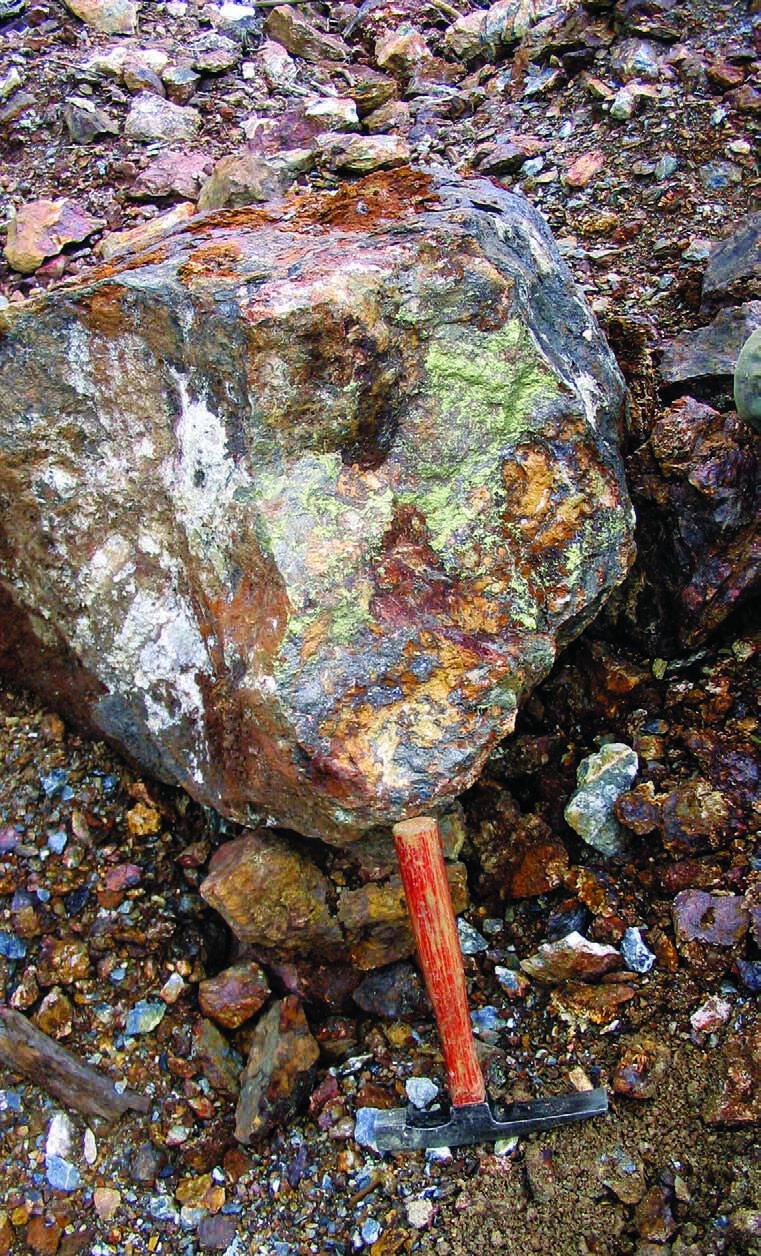
In May, Discovery Ventures Inc. completed a preliminary economic assessment on the Willa property, and acquired an interest in the nearby Max mine and mill facility. The company proposes to rehabilitate the historic underground workings at the Willa, and transport ore to the Max for processing. The operation has a proposed mining and processing rate of 500 tonnes per day. Average mine diluted grades are reported at 4.24 grams per tonne gold, 11.24 grams per tonne silver, and 0.79 per cent copper over the life of the mine.
Margaux Resources Ltd. drilled at Jersey-Emerald, which hosts a variety of showings, targeting zinc-tungsten zones.
Silver Mountain Mines Inc. drilled at Ptarmigan, extending zones of silver-lead-zinc mineralization southward toward the Iron Cap and Nip and Tuck zones.
SEDEX mineralization in Mesoproterozoic rocks continued to be an exploration target. MMG Ltd. conducted geological and geophysical work on the Findlay property, and drilled two holes at the Phoenix zone. Santa Fe Metals Corp. drilled a gravity anomaly on the Sully property. PJX Resources Inc. continued work at Vine, with drilling and geophysical modelling.
Specialty Metals and Industrial Minerals
Baymag Inc. continued operations at the Mount Brussilof mine, which produces magnesite from Cambrian carbonate rocks. Farther west, MGX Minerals Inc. drilled for magnesite in Mesoproterozoic carbonate rocks at the Driftwood Magnesite property.

Heemskirk Canada Ltd. worked on its frac sand project at the Moberley Silica mine. To meet product specifications, current operations need to be redeveloped; test and process optimization work is ongoing. Construction of a processing plant is expected to begin late 2014.
CertainTeed Gypsum Canada Inc. produced gypsum at the Elkhorn mine. It also continued work on the proposed Kootenay West Mine, which is now in the pre-application stages of environmental assessment. The estimated production is 15 megatonnes gypsum over a 38-year mine life at an average rate of 400,000 tons per year.
Eagle Graphite Corp. operates the Black Crystal flake graphite quarry. The plant and open-pit quarry have been on care and maintenance. This year, efforts focused on expanding exploration and construction.
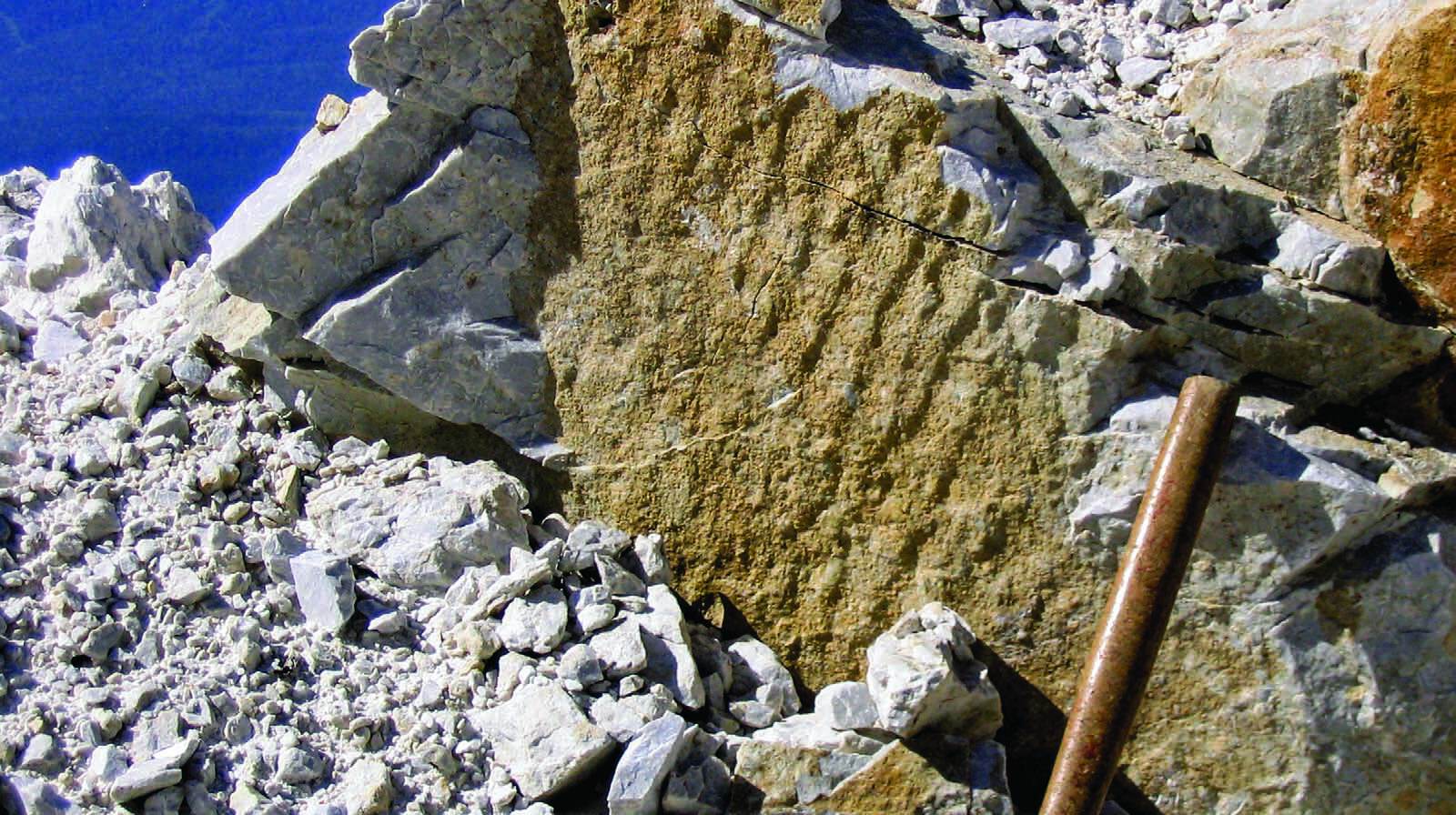
Coal
Mining operations, coal production and expansion plans continued at the five mines in the Elk Valley operated by Teck Coal Ltd. The main product is metallurgical coal (85 per cent), with some thermal and pulverized coal injection (PCI) coal (15 per cent combined). The region accounts for approximately 70 per cent of Canada’s annual coal exports. Production from the Elk Valley in 2013 was 25.6 megatonnes of clean coal; similar volumes are expected for 2014.
At Elkview Operations, the Baldy Ridge Extension entered pre-application of environmental assessment in June. Exploration drilling in the current mine boundary was directed at planning for the next phases of mining in the Baldy and Natal pits.
At Fording River Operations, exploration drilling was conducted in active pits, with plans for highwall pushback in Eagle and Turnbull pits. The Swift project continued working toward requirements in the pre-application stages of environmental assessment.
At Greenhills Operations, drilling focused on the active Cougar pit, and Teck received approvals for the West Spoil Expansion. Baseline work is being done for pre-application of the Cougar Pit Extension project.
Line Creek Phase II received conditional approval in 2013. It will add approximately 52 megatonnes of clean coal, extending the mine life of the Line Creek Operations by 18 years.
In June 2014, the Burnt Ridge Extension project also entered pre application of environmental assessment. The project will connect the current Phase I operating area at Line Creek Operations to the recently approved Phase II area by extending the current Burnt Ridge South pit to the north. It will add 8.3 megatonnes of clean coal to the mine.
Exploration drilling at Coal Mountain focused mainly on active pits, with one exploration hole drilled between 37-pit and 6-pit to help extend modelling.
In addition to the producing mine, the Elk Valley and Crowsnest coalfields host several advanced-stage projects. Teck Coal’s Coal Mountain Phase II (Marten Wheeler) project entered pre-application stages in September. The mine will use the infrastructure at the company’s Coal Mountain Operations, and produce 76.5 megatonnes of clean coal over an estimated 34-year mine life. In 2014, Teck focused on environmental baseline and geotechnical work.
Jameson Resources Limited completed a pre-feasibility study in August, estimating a 16-year mine life for the Crown Mountain project. It is preparing for pre-application of environmental assessment.
CanAus Coal Ltd. continued drilling at Loop Ridge and Michel Head as part of its Michel Creek project. The Coal Creek (CrowsNest Pass Coal Mining), and the Bingay Main (Centremount Coal Ltd.) projects remain on hold.
South and West Coast
Precious Metals
Gold exploration in southwestern British Columbia was generally quiet in 2014. Several companies reported extensions of option agreements. New Carolin Gold Corp. reached an agreement to acquire interests in the Carolin Mine.
Porphyry (Copper-Gold, Copper-Molybdenum, Molybdenum) Projects
The only major porphyry exploration project was Northisle Copper and Gold Inc.’s four-hole step-out drill program at Hushamu, a porphyry copper-molybdenum-gold prospect. Initial results indicate an induced-polarization target northwest of the resource area that includes copper mineralization. A fifth hole in the resource area was for metallurgical testing.
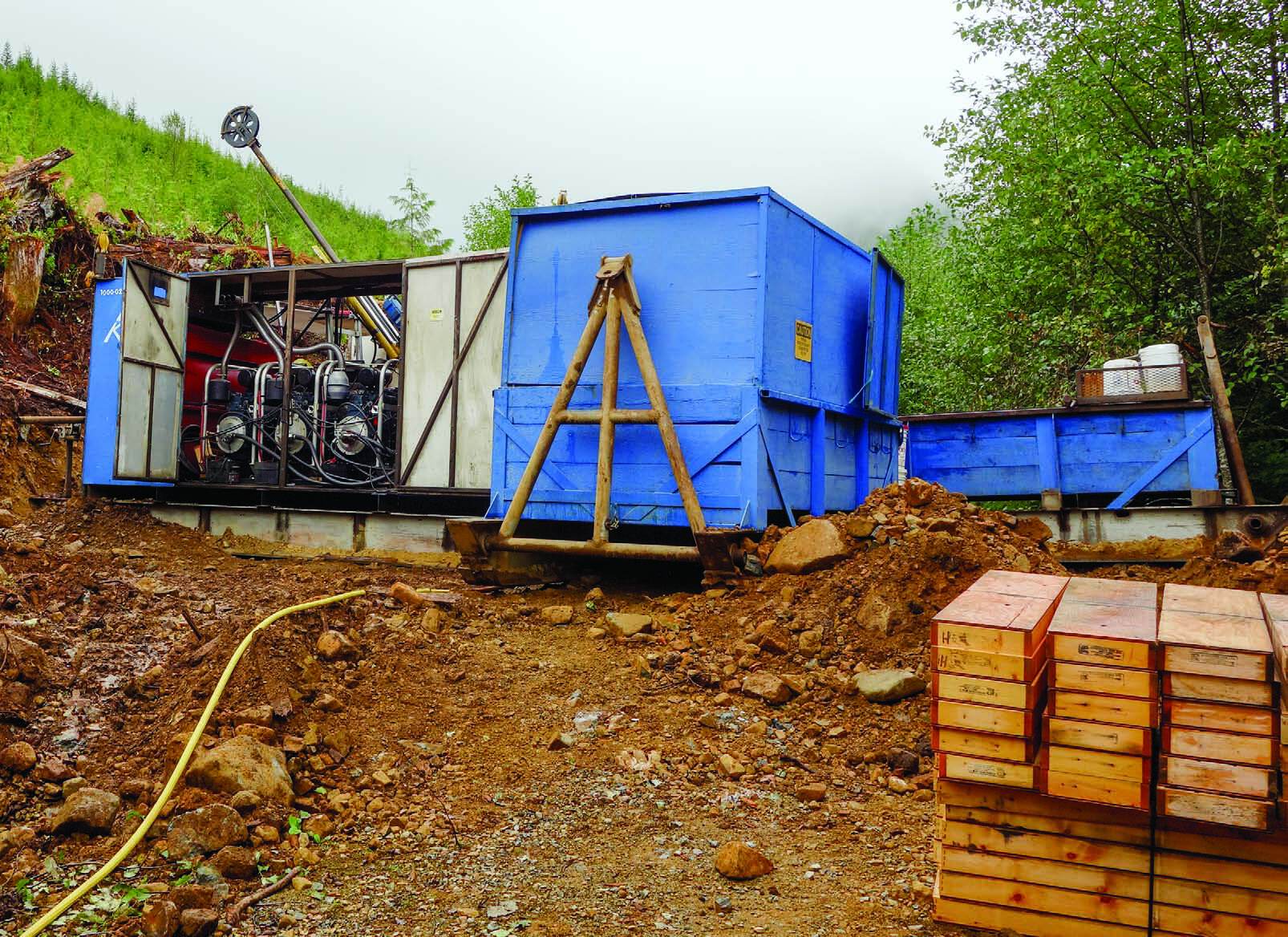
Polymetallic Base and Precious Metals
For the past five years, Nyrstar N.V.’s Myra Falls Operations has conducted resource definition and near-infrastructure exploration programs. As a consequence, reserve replacement has kept pace with mining. Development also continued at more distant western ore bodies.
Iron and Industrial Minerals
Pioneer Explorations Inc. (for Canadian Dehua International Mines Group Inc.) carried out ground magnetic surveys and mapping at several iron-skarn properties (Head Bay, Argonaut and Pacific Iron). Burnco Rock Products Ltd. revised the Burnco Aggregate Project to include a processing area and loading facility, and now estimates a maximum production rate of 1.5 million tonnes per year and a mine life of 16 years. The project remains in the pre-application phases of federal and provincial environmental assessment.
Coal
Comox Joint Venture partners Compliance Energy Corporation and LG International (Canada) Ltd. acquired Itochu Corporation’s 20 per cent interest in the Raven Underground Coal project. Compliance will resubmit an application for environmental certification of the proposed 1.9-megatonnesper-year semi-soft coking coal mine. Thermal coal producer Quinsam Coal Corporation has explored on site and proposed exploration off site at Quinsam South.
Geoscience Agencies Funded by the Provincial Government
British Columbia Geological Survey, Ministry of Energy and Mines
Founded in 1895, the British Columbia Geological Survey (BCGS) is the oldest government science organization in the province. Headquartered in Victoria, with a satellite office in Vancouver, the Survey is responsible for documenting, assessing and archiving British Columbia’s geology and related mineral and coal resources. Since its inception, BCGS scientists have provided pre-competitive raw data, historical records, and new concepts to help industry, government, academia and the general public make informed decisions. This information resides in free, webbased databases that are integrated with MapPlace, the Survey’s online service that allows clients to browse, visualize and analyze multidisciplinary geoscience data and create custom maps.
The Cordilleran Geoscience Section of the Survey generates new data and refines exploration models, largely through field-based studies by staff geoscientists, with analytical support provided by the Survey’s geochemical laboratories. The Resource Information Section updates and develops geoscience databases, and disseminates these data online. The Mineral Development Office in Vancouver is the section of the Survey that links government to the exploration and mining community; this office also markets and promotes the province’s mineral and coal resource opportunity to global investors. The activities and products of the Survey are profiled annually at Mineral Exploration Roundup in Vancouver, the BCGS Open House, the Prospectors & Developers Association of Canada Convention and several other geoscience conferences.
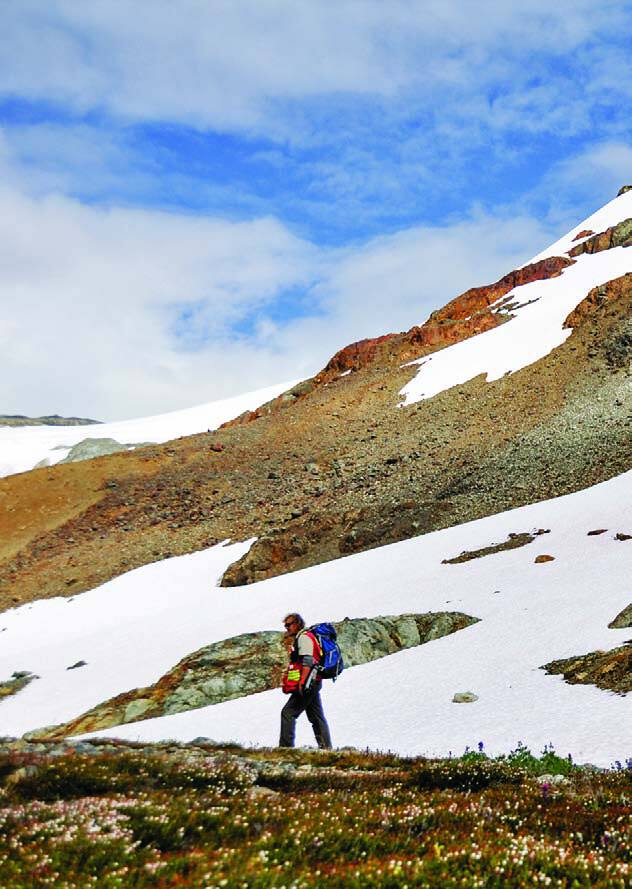
The strong commitment of the Survey to the minerals industry is reflected in the types of projects that it undertakes. In 2014, the Survey had field projects targeting the province’s prolific porphyry belts, with multi year studies in the Quesnel terrane of the Interior Plateau and in the Stikine terrane of northwestern B.C. Other projects were done in partnership with the Geological Survey of Canada through the Targeted Geoscience Initiatives (TGI-4) and Geo mapping for Energy and Minerals (GEM-2) programs. These joint projects included investigations of specialty metals, orogenic nickel-copper PGE deposits, and porphyry indicator minerals in till from the Highland Valley, Mount Polley and Gibraltar mines, and from the Woodjam project area.
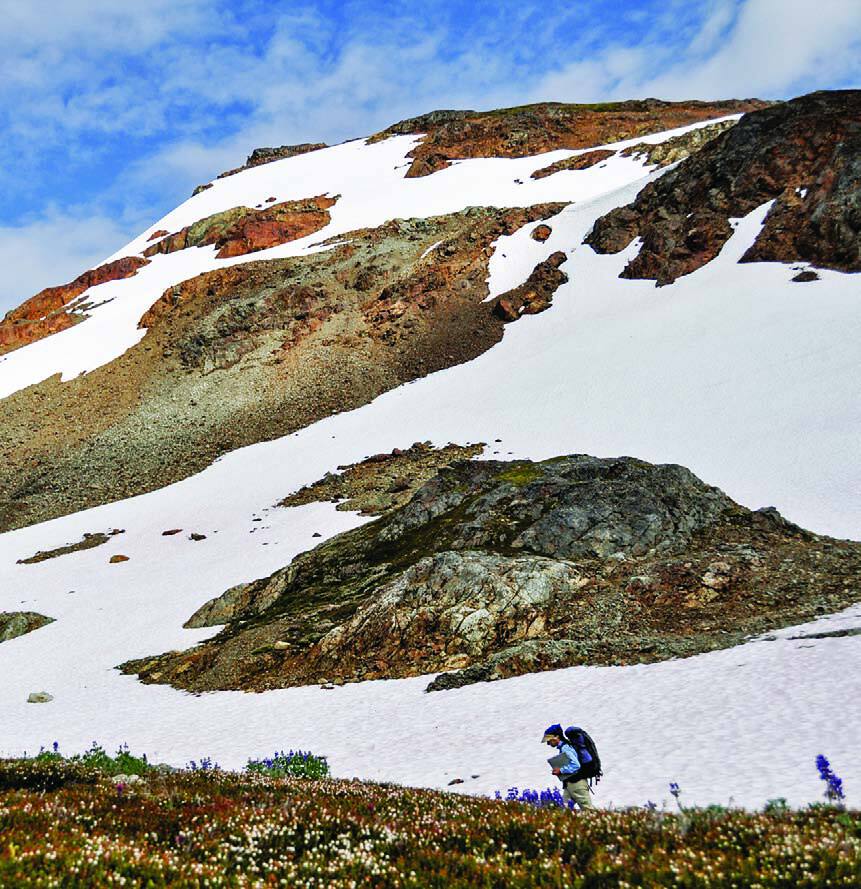
The Survey is also developing new mineral exploration methods including the use of: 1) lead isotopes as an inexpensive technique for targeting volcanogenic massive sulphide deposits in till-covered regions; 2) trace element characteristics of apatite to fingerprint the major mineral deposit types (in partnership with the University of Victoria); 3) proprietary government digital aerial photograph stereo models to produce new till-potential maps that allow industry to reduce unnecessary till sampling by up to 75 per cent; and 4) portable X-ray fluorescence (XRF) instruments to measure rare earth element abundances in field samples.
The preliminary results of these and other Survey projects are published annually in the BCGS publication, Geological Fieldwork, and in publications by partners including Summary of Field Activities (Geoscience BC) and Current Research (GSC).
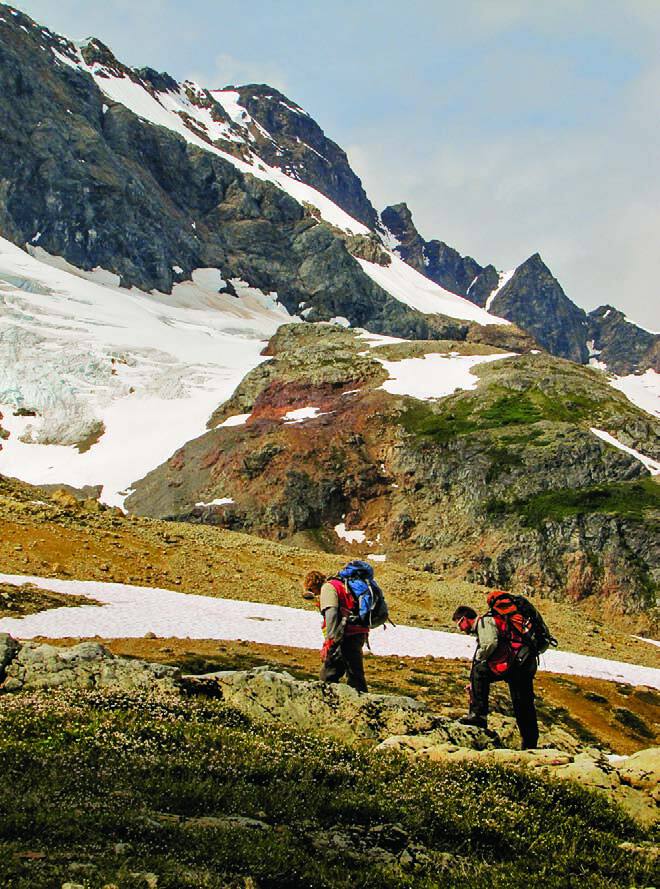
As part of ongoing updates, 2014 saw an increase in the number of documents available online from the Survey’s databases, which now include 34,000 assessment reports from ARIS (Assessment Reports Indexing System), 900 reports in COALFILE and 14,000 records in the MINFILE mineral occurrence inventory (with 1,700 new occurrences and 4,200 revised entries). Property File, a collection of documents donated to the Survey over the last 150 years and hitherto available only in hardcopy, now contains over 54,000 items. The Survey updated the Regional Geochemical Survey database and is currently modernizing the provincial lithogeochemical database. The BC Digital Geology compilation map received several updates, including five maps from northern Vancouver Island. Development continues on the next generation of MapPlace.
Geoscience BC
Geoscience BC is a not-for-profit, non-governmental, geoscience organization established in 2005 with grants from the provincial government. Geoscience BC is industry-focused, with a board of directors and technical advisors largely drawn from industry. It is mandated to promote mineral, oil and gas, and geothermal exploration in British Columbia by generating and distributing geoscience data. Open and targeted requests for proposals generate many of the large geoscience projects, and work is done by contractors, consultants and other providers of public geoscience.
Reports released in 2014 that supported mineral exploration included aeromagnetic, surficial geology, and geochemical data from the TREK project, which targeted an area of more than 20,000 square kilometres in the northern Interior Plateau. Another major release included combined regional geophysical and geochemical survey data from the Northern Vancouver Island Project. All reports from Geoscience BC are available to the public at no charge.
